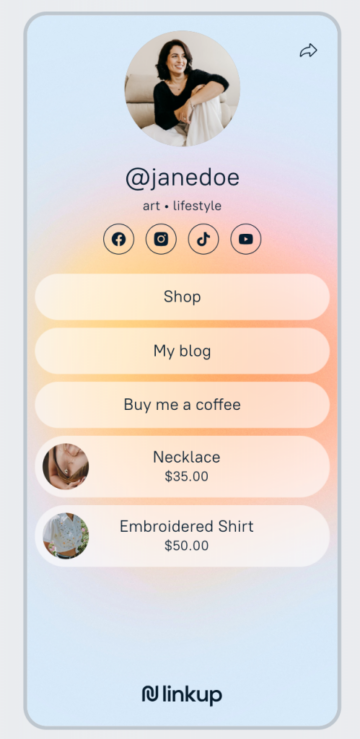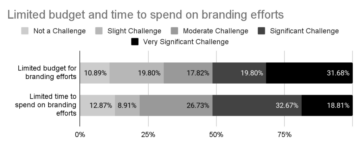In the bustling world of digital marketing, understanding the effectiveness of each promotional campaign you run is not just important — it’s absolutely non-negotiable. That’s where UTM tags come into play, turning guesswork into precise, actionable insights.
If you’re looking to improve your marketing strategy, stick around as we guide you through the ins and outs of using UTM tags to track the success of your marketing efforts like a pro. Especially if you’re navigating the vibrant seas of ecommerce with platforms like Ecwid, this is one article you can’t afford to miss!
Introduction to UTM Tags
What are UTM tags? Think of them as your marketing campaigns’ fingerprints.
The abbreviation stands for Urchin Tracking Module, and it’s a simple yet powerful way to track the performance of your website links. UTM tags are snippets of code that you can attach to the end of any URL, providing valuable information about where the traffic is coming from and how effective your campaigns are.
It’s like having a digital detective at your fingertips, providing you with the insights to make data-driven decisions.
UTM Tag Parameters
In terms of UTM tags, parameters are the key ingredients that make up the code snippets attached to your URLs.
A UTM tag consists of the following parameters:
- Source — utm_source: The origin of the traffic, such as a specific website or platform (e.g., Google or newsletter).
- Medium — utm_medium: The type of marketing channel, whether it’s email, social media, or paid ads.
- Campaign name — utm_campaign: The name of your campaign. This could be the promotion or product you’re featuring.
- Term (optional) — utm_term: Used for tracking specific keywords or terms for paid search campaigns.
- Content (optional)– utm_content: Allows you to differentiate between different versions within the same ad or campaign, such as A/B testing or ad variations.
Here’s how a UTM-tagged link looks like:
www.example.com/?utm_source=facebook&utm_medium=social_media&utm_campaign=spring_sale
In this example, the UTM tags are:
- utm_source=facebook
- utm_medium=social_media
- and utm_campaign=spring_sale.
These tags will allow you to track the source of your traffic (Facebook), the medium used (social media), and the specific campaign (spring sale).
Why Use UTM Tags?
While the concept of tracking links may seem straightforward, it’s often an overlooked aspect of many marketing strategies.
UTM tags provide you with valuable insights on your marketing efforts, helping you to:
- Measure the effectiveness of your campaigns: With UTM tags, you can track and compare the performance of different campaigns and channels. This will give you a better understanding of which campaigns are driving the most traffic and conversions, allowing you to focus your efforts and budget on the most successful strategies.
- Identify the best sources of traffic: UTM tags can help you pinpoint which platforms, websites, or channels are driving the most valuable traffic to your site. This information can guide your decision-making when it comes to investing in certain marketing channels or partnerships.
- Analyze customer behaviors and preferences: By tracking specific campaigns and their performance, you’ll gain valuable insights into your customers’ behaviors and preferences. This information can help you tailor your marketing efforts to better suit their needs and interests.
How to Create UTM Tags
Now that you understand the benefits of using UTM tags let’s dive into how to implement them effectively in your marketing campaigns.
Creating UTM tags might sound complex, but it’s as easy as pie! Here’s a quick, step-by-step breakdown:
- Start with your website URL: This is the destination you want your visitors to reach.
- Add UTM parameters: These are the tracking variables you’ll append to your URL.
There are plenty of online tools to help build your UTM-tagged URLs with ease. For example, Campaign URL Builder. Or, you can just manually add UTM parameters to the end of a URL. - Test and track: Once you have your UTM-tagged URLs, test them to ensure they work correctly. Then, you can use analytics tools like Google Analytics to track their performance and gather insights.
Let’s imagine you’re running a flash sale and want to promote it via an email newsletter. You need to add UTM tags to the URL of the sale page in your online store. Say, it’s https://www.online-store.com/sale.
Let’s use Campaign URL Builder to add UTM tags to this example URL:
- Enter the site URL you want the tags to be added to
- Fill in in the fields:
- Copy the generated campaign URL and paste it into your email.
in the campaign source — newsletter
in the campaign medium — email
in the campaign name — flash_sale


The information about the traffic source will be sent to analytics tools. If you use Google Analytics, you’ll be able to see that data using Campaigns.
Managing UTM Tags for Online Stores
As an online seller, you probably run tons of promotional campaigns, so you’re no stranger to working with UTM tags. Luckily, some ecommerce platforms, like Ecwid, offer built-in order source tracking tools to make your life easier.
With Ecwid, you can easily track and measure your marketing campaigns’ success by viewing your orders’ sources directly in your store’s admin. This way, you spend less time toggling between your Ecwid admin and Google Analytics.
Plus, there is even automatic tagging for specific promotions, saving you time and effort! If you’re running an email campaign through Mailchimp or have Ecwid’s automated marketing emails turned on, UTM tags get created automatically for you. This means less manual work for you and more time focusing on what matters — growing your business. How cool is that?
When a customer clicks a link with a UTM tag and places an order in your store, you’ll see the order source information on the order details page in your Ecwid admin. If the customer interacts with other ads or marketing campaigns, the UTM parameters for those campaigns will show up, too.
But that’s not all!
Ecwid also provides you with built-in Marketing reports, which allow you to see at a glance where your orders are coming from — be it a Google ad, a Facebook post, or an email campaign.

Ecwid’s Marketing reports provide you with an easy-to-understand overview of your sales sources
The Marketing Reports in Ecwid offer a treasure trove of insights, including:
- Sources of sales: Understand which marketing channels are gold mines. Sales sources include Facebook, Instagram, and TikTok ads, abandoned cart emails, gift cards, and so on.
- Customers with/without consent to receive your marketing emails: Keep track of your audience’s preferences.

See how many customers opted in to receive marketing emails from you
In Marketing reports, you can choose a comparison period to see how things change over time. For example, you can compare this month’s sales to those of last month or compare the current year’s performance with that of previous years.

Comparing last week’s sales to those of the previous week
In addition to Marketing reports, Ecwid sellers can access various other store key metrics reports, including visitors, conversion rates, orders, and accounting. This way, you can keep your finger on the pulse of your online store and make data-driven decisions to grow your business.
Learn more about tracking main online store KPIs in this article:
Best Practices for UTM Tagging
Now that you’ve crafted your tagged URLs, where do you put them? Everywhere! Use these tags in:
- Social media posts
- Email campaigns
- Digital ads
- Anywhere else you can link to your content.
The trick is consistency. Make sure you’re applying UTM tags across all your marketing channels to get a holistic view of your campaign’s performance.
To wield UTM tags like a true marketing samurai, follow these best practices:
- Be consistent with naming conventions. Keep your tag names consistent, clean, and easy to read. Pick either underscores or dashes and stick with it for all your tags (like summer_sale or facebook_ad).
- Avoid common mistakes, like using spaces or inconsistent capitalization.
- Note that UTM codes are case-sensitive. We suggest using lowercase to ensure that your data is categorized correctly.
- Be specific when naming your UTM tags so you can easily spot the campaign later. For example, black_friday_2024 is way better than just sale.
- Keep track of the tagged URLs you’ve created for easier analysis. Keeping a list of your UTM links in a single spreadsheet will go a long way in helping you quickly get an overview of all your campaigns.
To Wrap Up: Start Using UTM Tags
UTM tags are not just a tool but a compass in the vast ocean of digital marketing, guiding your strategies toward success. By harnessing the power of these tags, especially with the intuitive functionality offered by Ecwid, you’re not just running campaigns — you’re launching strategic missions with clear targets and measurable outcomes.
Ready to transform your marketing game? Start implementing UTM tags today and watch your business insights and outcomes soar to new heights. Remember, in the digital age, knowledge isn’t just power — it’s profit.
- SEO Powered Content & PR Distribution. Get Amplified Today.
- PlatoData.Network Vertical Generative Ai. Empower Yourself. Access Here.
- PlatoAiStream. Web3 Intelligence. Knowledge Amplified. Access Here.
- PlatoESG. Carbon, CleanTech, Energy, Environment, Solar, Waste Management. Access Here.
- PlatoHealth. Biotech and Clinical Trials Intelligence. Access Here.
- Source: https://www.ecwid.com/blog/how-to-use-utm-tags.html
- :not
- :where
- $UP
- abbreviation
- Able
- About
- absolutely
- access
- Accounting
- across
- actionable
- Ad
- add
- added
- addition
- admin
- Ads
- afford
- age
- All
- allow
- Allowing
- allows
- also
- analysis
- analytics
- Applying
- ARE
- around
- article
- aspect
- attach
- attached
- Automated
- automatically
- behaviors
- benefits
- BEST
- best practices
- Better
- between
- Breakdown
- budget
- build
- builder
- business
- bustling
- but
- Campaign
- Campaigns
- CAN
- capitalization
- Cards
- categorized
- certain
- change
- Channel
- channels
- Choose
- clean
- clear
- code
- Codes
- come
- comes
- coming
- Common
- compare
- comparison
- Compass
- complex
- concept
- consistency
- consistent
- consists
- content
- Conventions
- Conversion
- conversions
- Cool
- correctly
- could
- crafted
- create
- created
- Current
- customer
- Customers
- data
- decisions
- destination
- details
- different
- differentiate
- digital
- digital age
- digital marketing
- dive
- driving
- e
- each
- ease
- easier
- easily
- easy
- ecommerce
- Effective
- effectively
- effectiveness
- efforts
- either
- else
- emails
- end
- enhance
- ensure
- especially
- essential
- Even
- example
- Featuring
- Fields
- finger
- fingertips
- Flash
- Focus
- focusing
- follow
- following
- For
- from
- functionality
- Gain
- game
- gather
- generated
- get
- gift
- gift cards
- Give
- Glance
- Gold
- Google Analytics
- Grow
- Growing
- guide
- guiding
- Harnessing
- Have
- having
- heights
- help
- helping
- holistic
- How
- How To
- HTML
- HTTPS
- imagine
- implement
- implementing
- improve
- in
- include
- Including
- inconsistent
- information
- ingredients
- insights
- interacts
- interests
- into
- intuitive
- investing
- just
- Keep
- keeping
- Key
- keywords
- knowledge
- Last
- later
- launching
- less
- Life
- like
- LINK
- links
- List
- Long
- looking
- LOOKS
- mailchimp
- Main
- make
- manual
- manual work
- manually
- many
- Marketing
- Marketing Campaigns
- marketing channels
- marketing efforts
- Marketing Strategies
- marketing strategy
- max-width
- May..
- means
- measurable
- measure
- Media
- medium
- Metrics
- might
- mines
- missions
- module
- Month
- more
- most
- name
- names
- naming
- navigating
- Need
- needs
- New
- Newsletter
- ocean
- offer
- offered
- often
- on
- once
- ONE
- online
- online store
- or
- order
- orders
- Origin
- Other
- outcomes
- over
- overview
- page
- paid
- parameters
- partnerships
- performance
- period
- pick
- Places
- platform
- Platforms
- plato
- Plato Data Intelligence
- PlatoData
- Play
- Plenty
- Post
- power
- powerful
- practices
- precise
- preferences
- previous
- Pro
- probably
- Product
- Profit
- promote
- promotion
- promotional
- Promotions
- provide
- provides
- providing
- pulse
- put
- Quick
- quickly
- Rates
- reach
- Read
- receive
- remember
- Reports
- Run
- running
- sale
- sales
- same
- saving
- say
- Search
- see
- seem
- Sellers
- sent
- show
- Simple
- single
- site
- soar
- Social
- social media
- some
- Sound
- Source
- Sources
- spaces
- specific
- spend
- Spot
- Spreadsheet
- spring
- stands
- start
- Stick
- store
- stores
- straightforward
- stranger
- Strategic
- strategies
- Strategy
- success
- successful
- such
- suggest
- Suit
- sure
- TAG
- tailor
- targets
- terms
- test
- Testing
- than
- that
- The
- their
- Them
- then
- There.
- These
- they
- things
- Think
- this
- those
- Through
- tiktok
- time
- to
- today
- tons
- too
- tool
- tools
- toward
- track
- Tracking
- traffic
- Transform
- trick
- true
- Turned
- Turning
- type
- underscores
- understand
- understanding
- URL
- use
- used
- using
- Valuable
- Valuable Information
- variables
- variations
- various
- Vast
- versions
- via
- vibrant
- View
- viewing
- visitors
- want
- Watch
- Way..
- Website
- websites
- What
- when
- whether
- which
- wield
- will
- with
- within
- Work
- working
- world
- wrap
- years
- yet
- you
- Your
- zephyrnet













